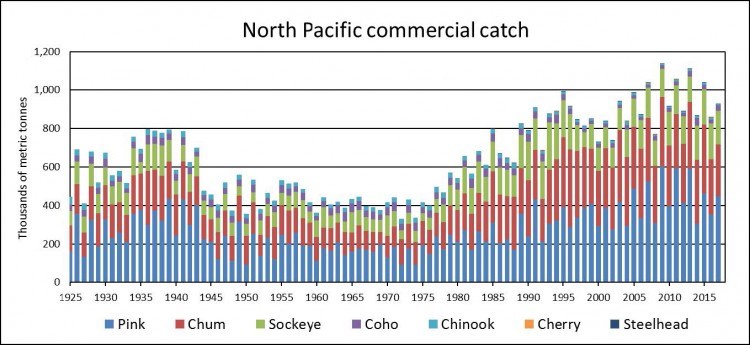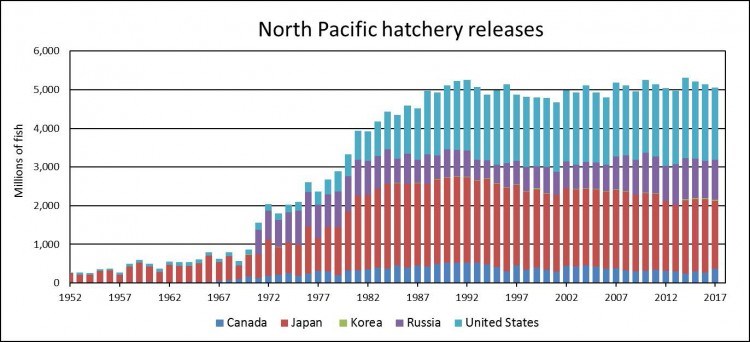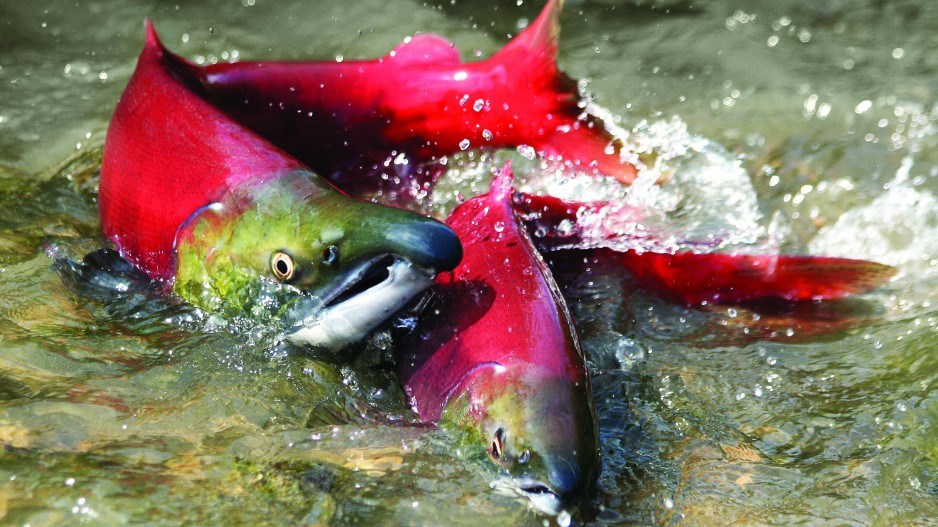Here’s something for Canadian negotiators at the Pacific Salmon Treaty negotiation table to chew on.
In 2017, nearly 1 million tonnes of Pacific salmon (460 million fish) were harvested by five Pacific nations, with the U.S. taking more than half, according to a preliminary report on harvest levels from the North Pacific Anadromous Fish Commission (NPAFC).
American fishermen, mostly in Alaska, harvested 53% of all Pacific salmon in 2017; Canadians took just 1%.
Russia had the second largest harvest level, at 38%, Japan 8%, and South Korea less than 1%.
So while American fishermen harvested 487,000 metric tonnes of Pacific salmon, Canada harvested just under 14,000 metric tonnes.
Of the 487,000 metric tonnes caught by Americans, Alaska accounted for the lion’s share – 477,000. So fishermen in Washington and Oregon would account for only 10,000 metric tonnes.

Pink salmon, the most abundant of all Pacific salmon species, accounted for roughly half of the total catch throughout the Pacific region (49%), followed by chum at 29%, sockeye 19%, coho 3% and Chinook 1%.
Commercial hatcheries have a lot to do with the comparatively large harvest levels in Alaska, Japan and Russia.
Hatcheries throughout the Pacific region released 5 billion fish in 2017, as they have for the last three decades, according to the NPAFC.
American hatcheries (mostly in Alaska) released 1.9 billion salmon (37%), Japan 1.8 billion (35%), Russia 1 billion (21%), Canada 368 million (7%), and South Korea just 18 million (1%).

The NPAFC report, released May 25, confirms the findings of a study published in April by James Irvine and Greg Ruggerone: Pacific salmon abundance is at an all-time high, but with that abundance skewed by pink and chum. See Pacific Salmon are more abundant than ever.
“Pacific salmon abundance in the North Pacific, as indexed by aggregate commercial catches, remains at near all-time high levels, although catches have declined during the past decade,” the NPAFC states.
It notes that, despite the high abundance, the commercial catch has been in decline over the past decade.
“In general, the catch trend over the last 10 years has been declining; catches in 2017 were the lowest since 2002.”



